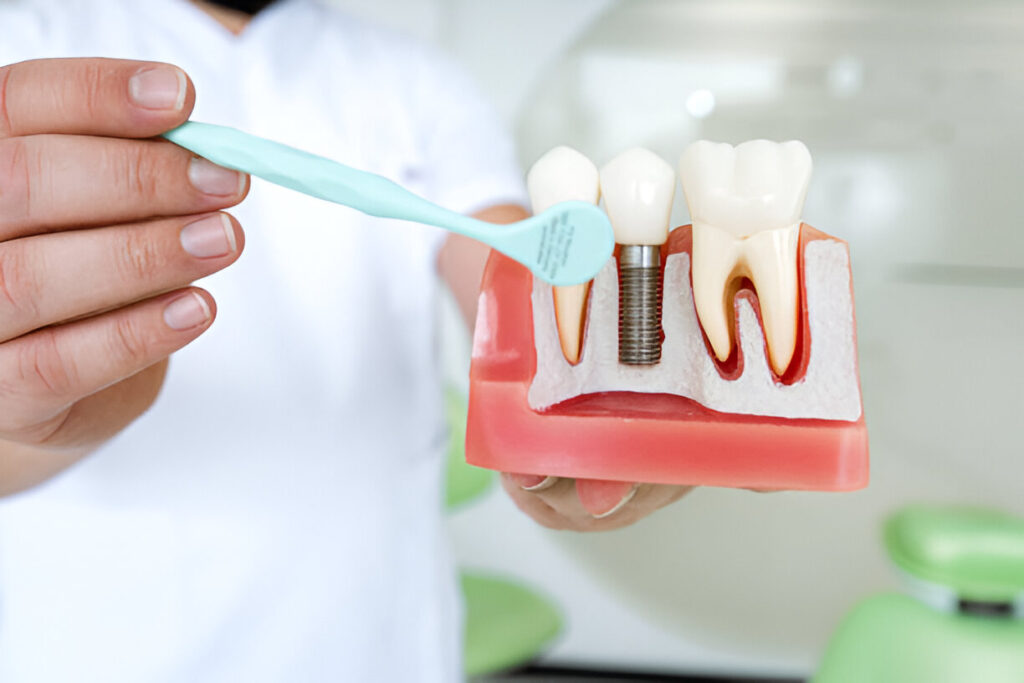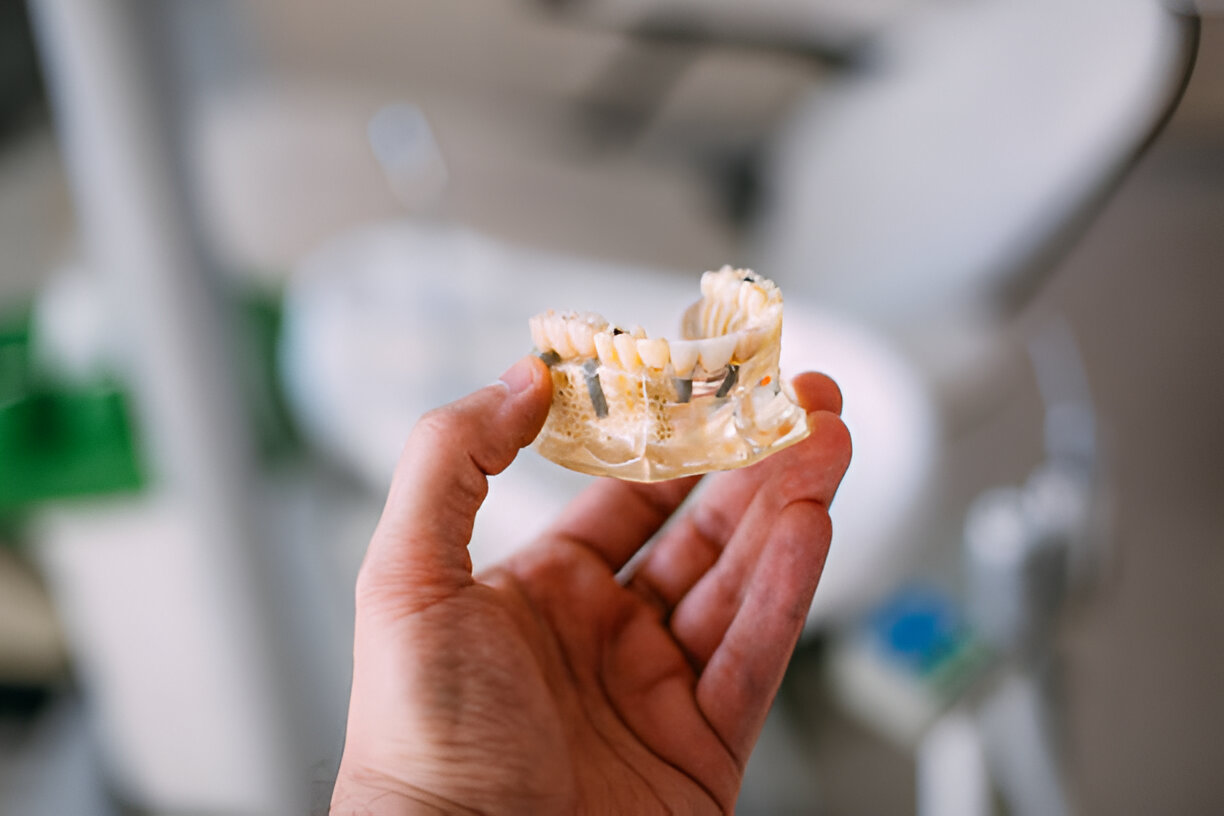Summary:
Looking to restore your smile with dental implants? Keller Family Dental is a trusted choice for dental implants in Keller, Texas, providing high-quality, personalized care with cutting-edge technology and a compassionate team. This blog delves into why Keller Family Dental stands out, explaining the benefits of dental implants, the treatment process, and essential aftercare tips to ensure lasting results. With our team’s expertise and a commitment to quality, you’ll regain not only your smile but your confidence, too. Read on to learn how dental implants can transform your dental health and appearance.
Dental Implants in Keller, Texas, have become the gold standard in tooth replacement, and for good reason. Unlike temporary solutions like dentures or bridges, dental implants offer a permanent, natural-looking restoration that feels and functions like your original teeth. Made from durable titanium, implants are anchored securely into your jawbone, mimicking a natural tooth root. The result? A stable, reliable solution that can last a lifetime with proper care.
At Keller Family Dental, our team specializes in dental implants in Keller, Texas. Here, we’ll discuss how dental implants work, why they’re a superior choice, and the benefits of trusting your implant journey with our dedicated team.

Why Choose Keller Family Dental for Dental Implants?
When considering dental implants, choosing an experienced and compassionate provider is essential. Keller Family Dental offers a blend of advanced technology, personalized treatment plans, and a patient-focused approach, making us the preferred choice for dental implants in Keller, Texas. Here’s why:
- Expertise in Implant Dentistry
Our dentists in Keller are highly skilled in implant placement, backed by years of experience and specialized training. We approach each case with precision, ensuring that every implant procedure is conducted with care to guarantee optimal results.
- Personalized Treatment Plans
No two smiles are the same. Each patient deserves a unique approach, so we tailor our implant treatments to meet individual needs and expectations. Our team thoroughly evaluates your oral health and bone structure, using this data to create a treatment plan that aligns with your goals.
- State-of-the-Art Technology
Keller Family Dental utilizes the latest dental technologies, including 3D imaging and digital scans. This advanced technology allows us to map out implant placements with high precision, reducing recovery time and enhancing the overall success of the procedure.
Understanding Dental Implants: A Popular Choice for Missing Teeth
Dental implants are artificial tooth roots, typically made of titanium, that provide a stable foundation for replacement teeth. Unlike traditional dentures or bridges, which can feel cumbersome or unnatural, implants look, feel, and function like natural teeth.
Fun Fact:
Did you know dental implants have a success rate of over 95%? They’re known to last a lifetime with proper care, making them one of the most durable dental solutions available!
Key Benefits of Dental Implants:
- Natural Look and Feel: Implants are custom-designed to match the color, shape, and size of your natural teeth, blending seamlessly with your smile.
- Bone Health Preservation: Implants stimulate the jawbone, preventing bone loss and maintaining facial structure, which can otherwise change with missing teeth.
- Convenience and Comfort: Unlike dentures, implants are fixed and do not require special adhesives or daily removal, making them easy to care for.

The Dental Implant Process at Keller Family Dental
- Initial Consultation
Your journey begins with an in-depth consultation with our experienced dentists in Keller. During this visit, we assess your dental health, review your medical history, and discuss your goals. X-rays and 3D imaging help us determine if your jawbone is healthy enough to support implants. - Treatment Planning
Once you’re deemed a good candidate, our team will work with you to develop a personalized treatment plan. This stage is essential for identifying the best implant placement and any additional treatments needed, such as bone grafts, to ensure a successful procedure. - Implant Placement Procedure
Our team will carefully insert the titanium posts into your jawbone during the implant placement. Local anesthesia or sedation options are available to ensure comfort throughout the procedure. The implants will then fuse with your jawbone over several months, forming a solid base for the replacement tooth. - Crown Placement
After the implants have fully integrated, we attach custom crowns designed to mimic the appearance and feel of natural teeth. This final step brings back the aesthetics and functionality of your smile, restoring your confidence.
Aftercare Tips for Dental Implants
To keep your implants in top shape, proper care is crucial. While dental implants are low maintenance, a few essential habits can go a long way:
- Brush and Floss Regularly
Just like natural teeth, implants benefit from daily brushing and flossing. To prevent damage to the crown, use a soft-bristled toothbrush and a non-abrasive toothpaste. - Attend Regular Check-Ups
Visit your dentists in Keller for routine check-ups to ensure your implants are in good condition. Regular appointments allow us to monitor the health of your gums and implant stability. - Avoid Hard Foods
While implants are strong, it’s still best to avoid hard foods that can damage the crowns, especially in the first few months following the procedure. - Refrain from Smoking
Smoking can impede the healing process and increase the risk of implant complications. For optimal results, consider quitting smoking before your implant procedure.
Real Success Stories from Keller Family Dental Patients
Our patients’ satisfaction speaks volumes about the quality of care at Keller Family Dental. Many of our implant patients have shared stories of renewed confidence, improved oral health, and enhanced quality of life after their procedures. Here’s one such story:
- “After struggling with dentures for years, I decided to try implants at Keller Family Dental. Initially, I was nervous, but the team made me feel comfortable from day one. Now, I can eat my favorite foods and smile confidently! The results have been life-changing.”

Key Takeaways
- Comprehensive Care: Keller Family Dental offers personalized implant solutions tailored to each patient’s needs.
- Advanced Technology: Our state-of-the-art tools ensure accurate placement and optimal results.
- Long-Term Benefits: Implants provide a natural look, improve function, and preserve jawbone health.
- High Success Rates: Dental implants are a long-lasting solution with minimal maintenance requirements.
- Patient-Centered Approach: From consultation to aftercare, Keller Family Dental supports patients every step of the way.
Ready to Transform Your Smile?
If you’re considering dental implants in Keller, Texas, Keller Family Dental is here to help. Contact us today to schedule a consultation and start your journey toward a confident, healthy smile!




